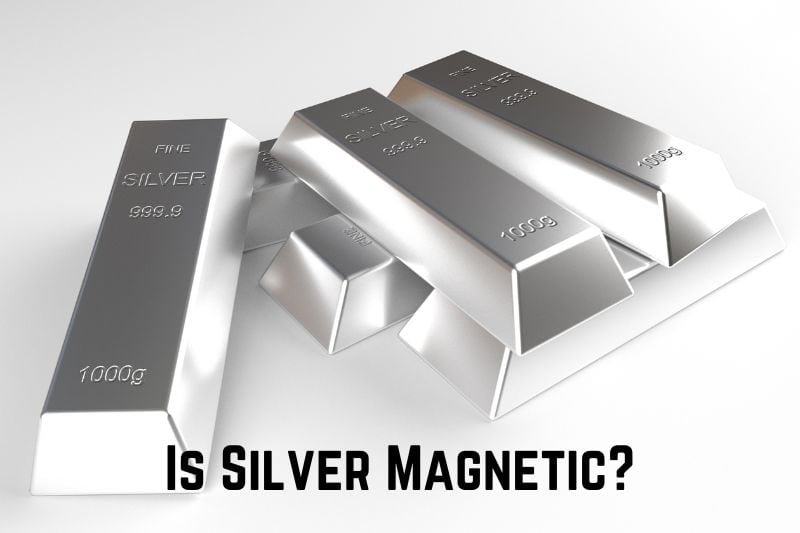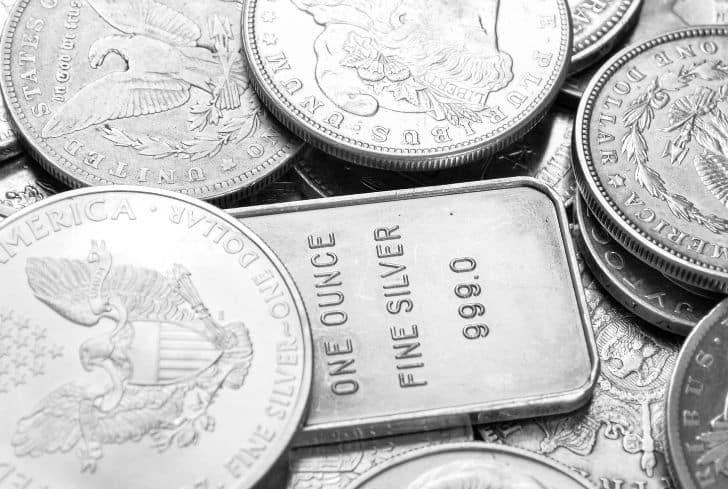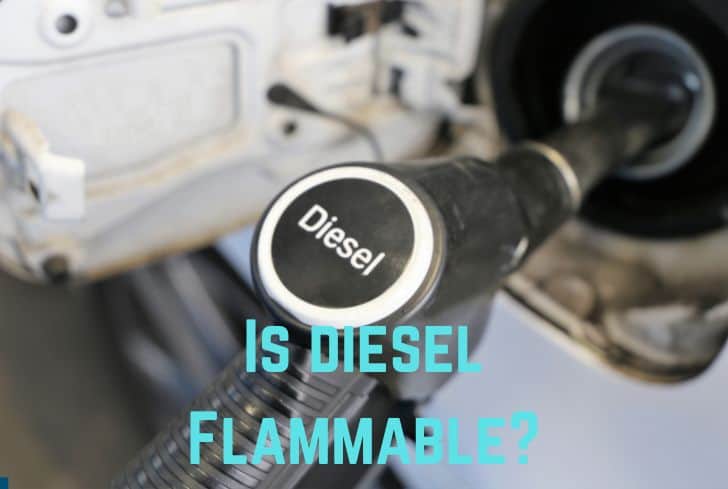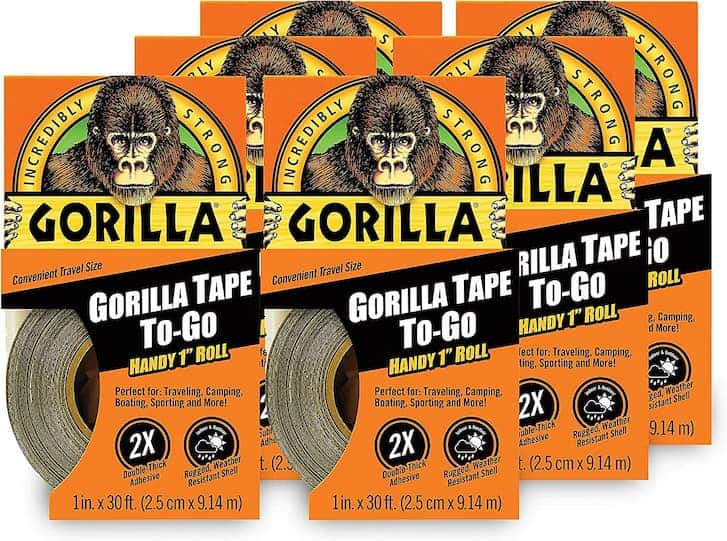Is Silver Magnetic? (No. It Won’t)

Ever bought silver jewelry only to have it rust shortly after? Unfortunately, you might buy an item thinking it’s made of pure metal just to find out it’s not. Some manufacturers produce imitations that resemble more expensive metals. How can you determine if something is pure silver before you buy it? There are recommendations to carry keychain magnets. But wait, is silver magnetic?
This article will begin by answering whether a magnet will stick to silver. We’ll go into further detail about whether it’s magnetic and whether silver plate and sterling silver are magnetic. Finding out whether silver is a good conductor of electricity and how to tell if your silver is real would also be interesting.
Read: Is Rhodium Magnetic? (Answered)
Will a Magnet Stick To Silver?
No, a magnet will not stick to silver. The silver electrons do not face in the same direction. Atoms in a magnetic material must line up for the magnetic effects to combine and produce an overall magnetic field. As a result, if you set a magnet close to an item you believe is made of silver and sticks, then it’s not pure silver.
While silver fails to stick to magnets, it interacts with their movement. In the silver item, the moving magnet creates an electric current. A magnetic field exists within the electric current. Thus, the magnetic field’s interaction with the moving magnet causes it. Watch a magnet fall incredibly slowly when you drop one down a silver pipe.
Eddy currents are tiny electrical currents that develop when a magnet moves close to certain metals. Any electrical field will create a magnetic current. The magnet causes eddy currents in the metal as it falls. The magnetic field created by the eddy currents and the falling magnet engages in interaction. The magnet falls slowly because of this.
Is Silver Magnetic or Nonmagnetic?
Pure silver is non-magnetic. It is a diamagnetic material. It has diamagnetic properties. There are no unpaired electrons in silver. Spin in electrons results in a minute magnetic dipole. The net force is 0 when the spins are in balance. Since there are no unpaired electrons, the silver spins are in balance.
Silver would have a noticeable magnetic field around it if its unpaired electrons were out of balance.
When exposed to a magnetic field, silver displays a mild magnetic repulsion. The silver electrons align in a way that opposes the magnetic field, which results in the repulsive action. However, silver’s diamagnetic properties are so weak that they are impossible to examine without specialist tools.
The purest form of silver is.999 (99.9%), which is the purest form available. Silver is diamagnetic, though. Thus its purity is not relevant.
Is Sterling Silver Magnetic?
Sterling silver is not magnetic. It is a combination of 92.5% silver and 7.5% other metals. In most instances, it is either copper or zinc. Adding copper does not make the alloy magnetic but makes it more durable and hard. Hence if the item is attracted to a magnet, it’s not sterling silver.
That means apart from the authentication marks, you can also use a magnet to determine if you have pure sterling silver. Real sterling silver will have a stamp of .925, meaning it is 92.5% silver which is usually the best.
Another method you can use to identify pure sterling is by gently tapping with a piece of metal. Pure silver sterling will produce a high-pitched bell-like tone lasting 1 to 2 seconds.
Is Silver Plate Magnetic?
The magnetism of silver plating depends on the other alloy. Silver plates are made from different metals but with a thin silver coating application. The other metal can be iron or nickel and coated with silver. After all, nickel is ferromagnetic, and iron metals are highly magnetic. Pure silver is diamagnetic, but the other alloys might cause attraction.
Jewelry, for example, might have ferromagnetic properties on the clasp or fasteners, which will attract magnets. If you see any of the following marks “9.25,” “925/1000,” “Sterling,” “S/S,” or “Sterling 9.25.”, then you have pure silver. However, the item has silver plating if you see the other marks without the starling marking.

Is Silver a Good Conductor of Electricity?
Silver is a good conductor of electricity. It has a high number of freely moving electrons. The free electrons act as charge carriers, therefore, conducting electricity. Silver is the most conductive metal due to its unique crystal structure. The atoms have single valence electrons, resulting in easy sharing of electrons.
Electric current flows through silver as the electrons move in a preferred direction with a small amount of applied knowledge. If silver was an insulator, its electrons would be held tight and would not carry any charge. The electrons only move when there is an application of high voltage.
However, despite silver being a good conductor, it’s not used for electrical wiring as it’s expensive. Copper, less conductive than silver, is cheaper and more popular for electrical wiring.
How to Tell if Your Silver Is Real?
It’s important to know if you have real silver, especially those dealing with jewelry. Some people have allergic reactions to metals and require to know if their jewelry is real silver. It will also help you know if you are getting value for money since real silver has a high value in the market.
Acid Testing Kit
You can buy acid testing kits online if you regularly test silver. Rub a small sample of the metal using a small stone to leave a mark. It should be somewhere that is not easily visible, like the inner side of the ring or the back of a pendant. Put a drop of silver testing acid on the flake you have removed from the silver item.
The flake will then change color depending on the pureness of the silver. If it changes color, then you don’t have pure silver. Since you’re dealing with acids, follow the safety instructions in the packaging.
However, this test is only possible when dealing with an item that already belongs to you. Apart from being hazardous to carry, no store owner will allow you to use acid on an item you’ve not paid for.
Use Ice
Put an ice cube on top of the item you want to test. An authentic silver item will melt the ice cube rapidly, even at room temperature. Wear gloves or use a tool to hold the ice cube to prevent your body temperature from tampering with the results.
Silver has the highest thermal conductivity among common metals and alloys. That means it’s able to hold on to the heat well. The ice doesn’t chill the silver as fast as it does with the other types of metal.
For example, if you put an ice cube on top of a silver item and another on top of an iron item, the ice cube on the silver melts faster. If the ice cub on the silver melts slowly, it means the item has silver plating or is not silver.
Magnet Test
Silver is non-magnetic and should not be attracted by a magnet. Therefore if a magnet sticks to the item, it’s not pure silver. Most likely, the thing is an alloy of other metals like iron. Try using a small strong magnet such as a Neodymium disc magnet.
Another way to test for pure silver, especially if you’re working with bars, is to place the magnet on top of the bar while holding the bar in mid-air at an angle of 45 degrees. If the magnet sticks to the bar without sliding, it means the bar is not pure silver. However, the bar is still not pure silver if it slides too fast. Therefore, you have a pure silver bar if the magnet slides down slowly and steadily.
Authentication Marks
Real silver should have markings or stamps. The markings or stamps include the purity, mark of the manufacturer, date of manufacture, and other information about the piece. International sellers usually stamp silver as 999(99.9%), 925 (92.5%), or 900 (90% to indicate the level of purity of the silver.
Polish Test
Silver tarnishes very fast. Take a bit of polish and a clean white cloth. Clean the silver piece with a bit of cloth and then inspect it. You have a real silver item if you see a bit of black residue on the cloth.
If you don’t see black residue, there is a high possibility the item is not made from pure silver. The item has a silver plating or is an alloy of silver with another metal. That means the amount of silver is so minimal that it doesn’t tarnish quickly enough for you to notice.
Read: Is Iron Oxide Magnetic? (Answered)
Conclusion
Silver does not stick to a magnet and therefore making it non-magnetic. Its electrons do not align in the same direction, causing zero magnetic effect. Sterling silver is made up of 92.5% silver making it non-magnetic.
Interestingly silver is the most conductive metal due to its free electrons. You can use a magnet, acid testing kit, polish test, ice cubes and authentication marks to identify if you have pure silver.






